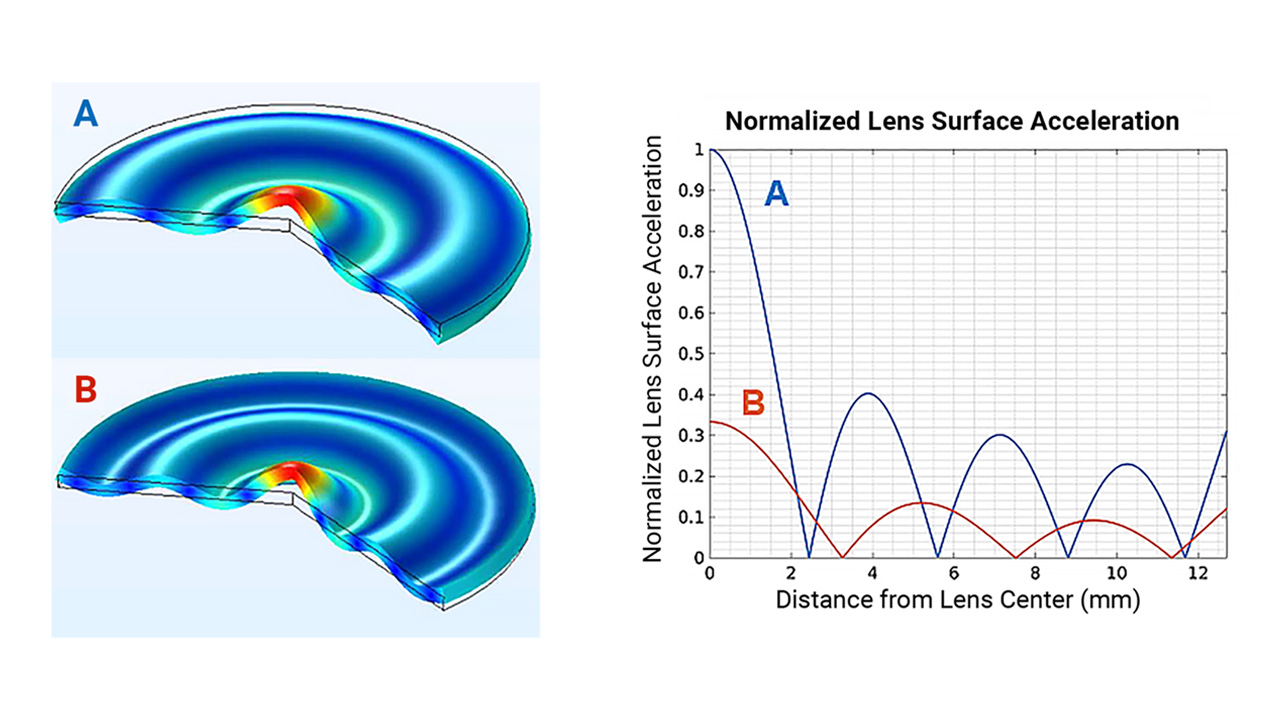Ultrasonic Lens Cleaning (ULC) technology can be mainly classified into the following types:
Single mode cleaning:
This method achieves cleaning by generating a single standing wave on the lens surface. The standing wave generates a high acceleration on the surface, which removes water droplets or other contaminants. Single-mode cleaning is usually performed at frequencies between 20kHz and 100kHz, but there may be cleaning blind spots that result in uneven cleaning results.

Bimodal cleaning:
Bimodal cleaning is a more advanced ULC method that employs two different standing waves in successive cleaning cycles. This method helps to eliminate cleaning blind spots that can occur in single-mode cleaning and ensures more comprehensive cleaning coverage.

Surface Acoustic Wave (SAW) Method:
Unlike standing waves that directly vibrate the lens, the SAW method uses sound waves travelling along the surface to pop off contaminants by applying direct energy to them.SAW is suitable for larger flat and rectangular panels such as LIDAR window sheets, but is more complex and expensive as it requires higher frequencies and multiple actuators.
Direct vibration method:
The direct vibration method achieves the cleaning effect by driving the camera lens itself to generate vibrations. This method allows for direct ULC in the camera module, but may add complexity to the ultrasonic cleaning and manufacturing process.
Lens Cap System (LCS):
Similar to the flat cover glass on a smartphone camera, the LCS fits compactly over the camera lens, providing a large field of view (FoV) and less optical distortion.

Integrated ULC:
Integrated ULC is achieved by integrating a piezoelectric transducer into the lens manufacturing process, an approach that reduces overall system size but requires precise alignment and more complex manufacturing processes.
Semiconductor integration:
Using specific semiconductor technology, it is possible to continuously remove rainwater from a lens by automatically sensing water droplets and atomizing them through vibration. Semiconductor-integrated ULC systems can remove dust, mud, and even attached insects cost-effectively.
The above technologies can be used individually or in combination to suit different application requirements and to achieve optimum cleaning results. For example, in the automotive industry, more advanced cleaning techniques such as dual-mode cleaning or SAW methods may be required to ensure that cameras and sensors function properly in all weather conditions. In other applications, on the other hand, single-mode cleaning may be sufficient. The choice of technique depends on the exact specifications of the lens, the type of contaminant, cost considerations, and the desired cleaning results.
*Image courtesy of Texas Instruments







 Focus on us
Focus on us